 Backend Development
Backend Development
 Python Tutorial
Python Tutorial
 Detailed guide to 15 Python editors/IDEs, there is always one that suits you!
Detailed guide to 15 Python editors/IDEs, there is always one that suits you!
Detailed guide to 15 Python editors/IDEs, there is always one that suits you!
Aug 09, 2023 pm 05:44 PM#This article introduces multiple Python IDEs and evaluates their advantages and disadvantages. Readers can refer to the Python IDE list listed in this article to choose the editor that suits them.
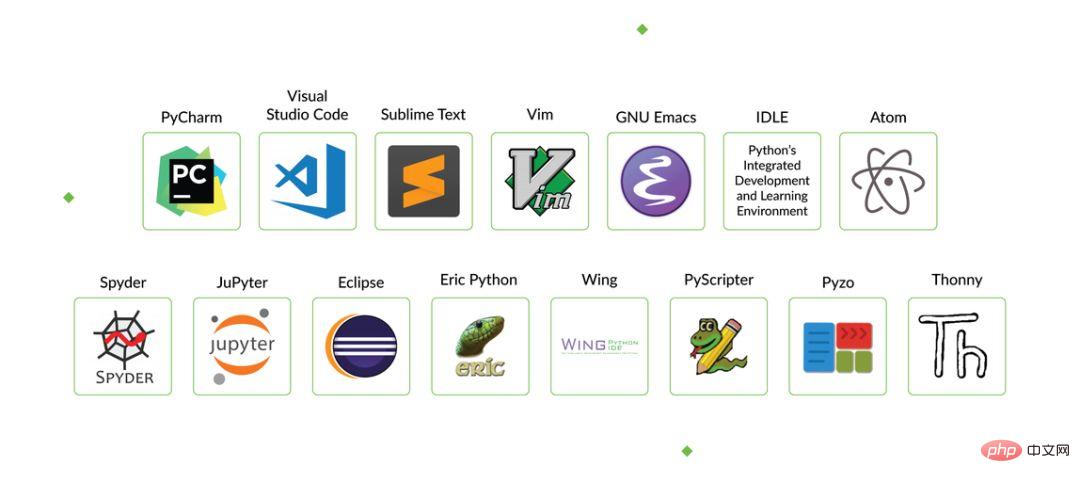
What is an IDE? What is the use of IDE?
An IDE is a software package used by developers to create programs. It integrates multiple highly connected components through a simple user interface to maximize programmer productivity. Essentially, an IDE is a tool that improves the process of creating, testing, and debugging code by making it easier. Tools used by IDE include:Text Editor
Compiler and/or interpreter
Assembly automation tool
Debugger
There is a similar term to IDE - code editor. Let’s first explore the similarities and differences between the two.
What is a code editor?
Code Editor is a text editor that can highlight syntax and layout code. Advanced code editor can develop and modify code.
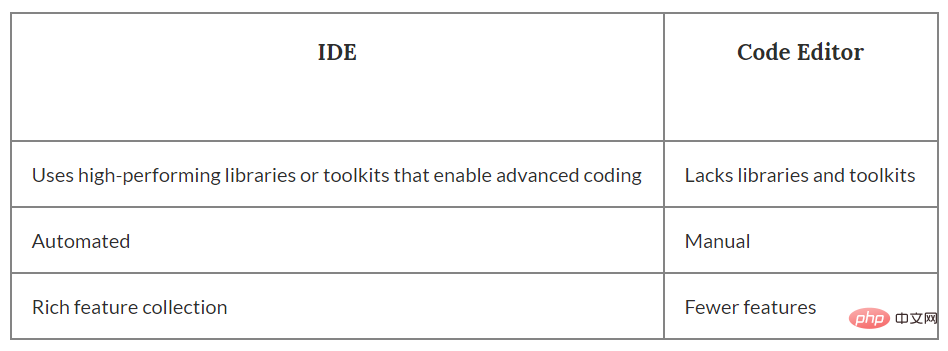
Distinguishing Features of IDEs and Code Editors
What are the common advantages of IDEs and code editors? They both help developers:
Store and reopen scripts
Run code
debug
Highlight syntax
The most popular IDE for Python developers
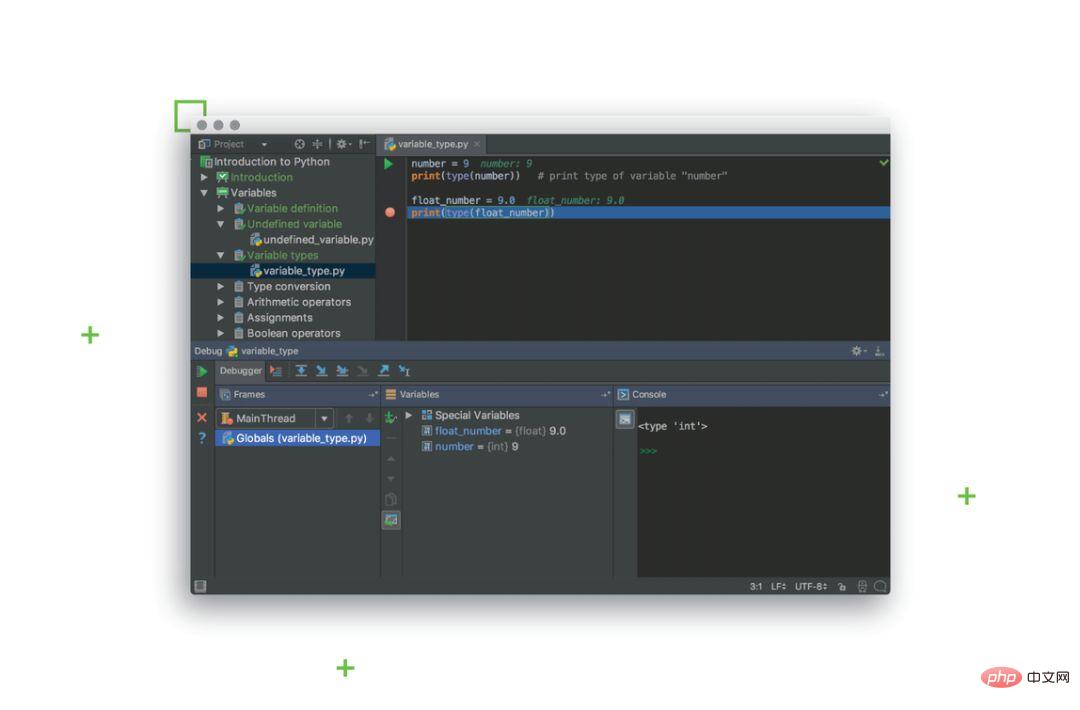
PyCharm is developed by JetBrains, a well-known software development company. It is considered the best Python IDE when it comes to artificial intelligence and machine learning. Most importantly, Pycharm incorporates multiple libraries (such as Matplotlib and NumPy) to help developers explore more available options.
Compatibility: Windows, MacOS, Linux
Main plugins and features:
Built-in developer tools
Remote development capability
Real-time editing mode
IPython Notebook
##Advantages:
PyCharm supports web development frameworks such as Pyramid, Flask and Django.
# Provides smart code capabilities to perform more precise and faster bug fixes.
Allows program development on remote hosts with the help of Docker and Vagrant connections and ssh terminals.
Disadvantages:
- ##Complex interface
- The cost of its advantages is high
Download address: https://code.visualstudio.com/Download
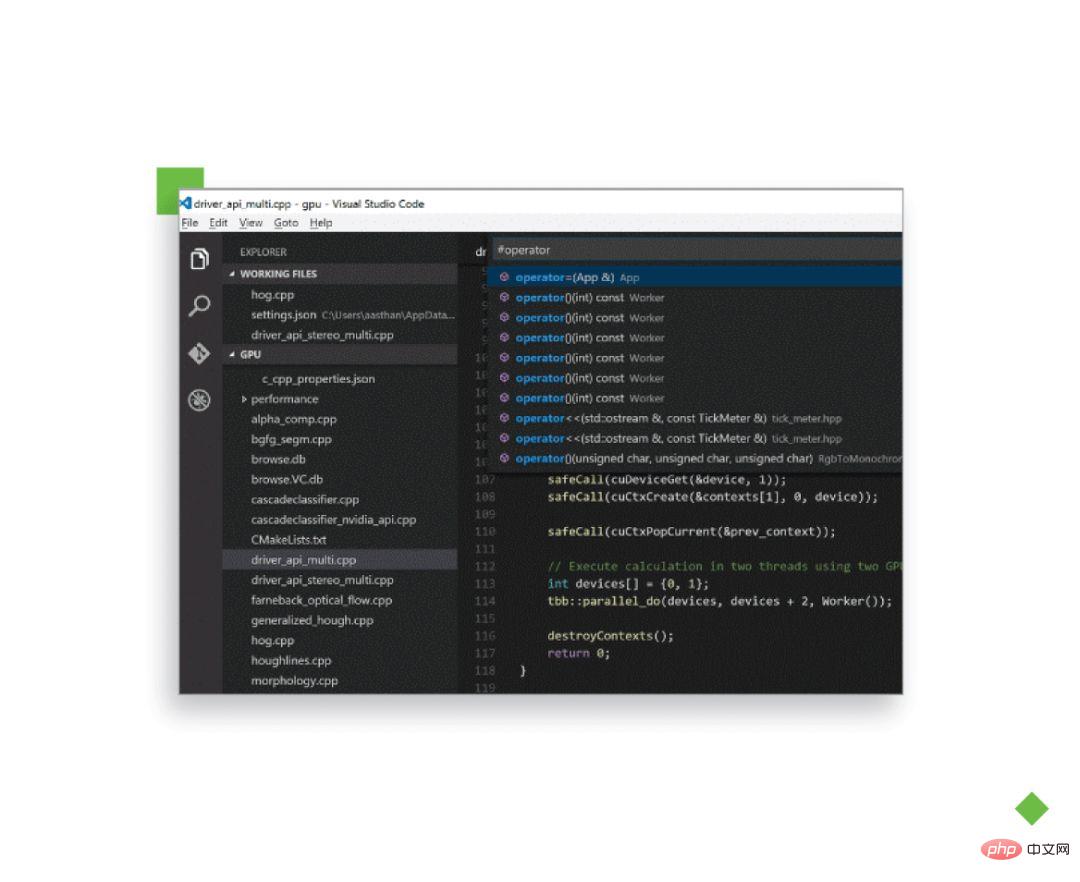
Visual Studio Code is sometimes confused with the Visual Studio IDE, which is not a commonly used tool among Python users. VS Code is a complete code editor with many great features, and many programmers call it the best IDE editor.
Compatibility: Windows, Linux, Mac OS
Main plugins and features:
Built-in git
Custom tool extension plug-in
Breakpoint debugging
Interactive Console
##Advantages:
Its Electron framework allows developers to use VS Code on almost any platform.
#Debug directly in the editor.
#Supports multiple keyboard shortcuts to speed up programming.
shortcoming:
debug has limited functionality.
#There are no built-in templates.
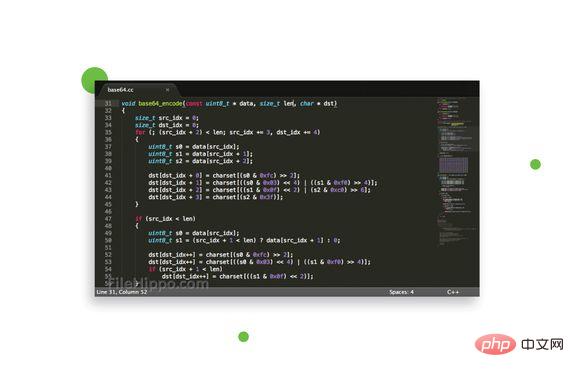
Compatibility: Windows, Linux, Mac OS
Main plugins and features:
-
Easy navigation for high performance
Supports different packages to customize the editor
Just one keyword to copy common code snippets
Instant project switching and split editing
Advantages:
Can handle multiple markup languages.
#Allows the user to select the project they want to work on.
Have important tools that can provide class and function wide indexing.
#Provides a powerful API and organized ecosystem for high performance.
Disadvantages:
Too advanced for novices.
# Its git plug-in is not particularly powerful.
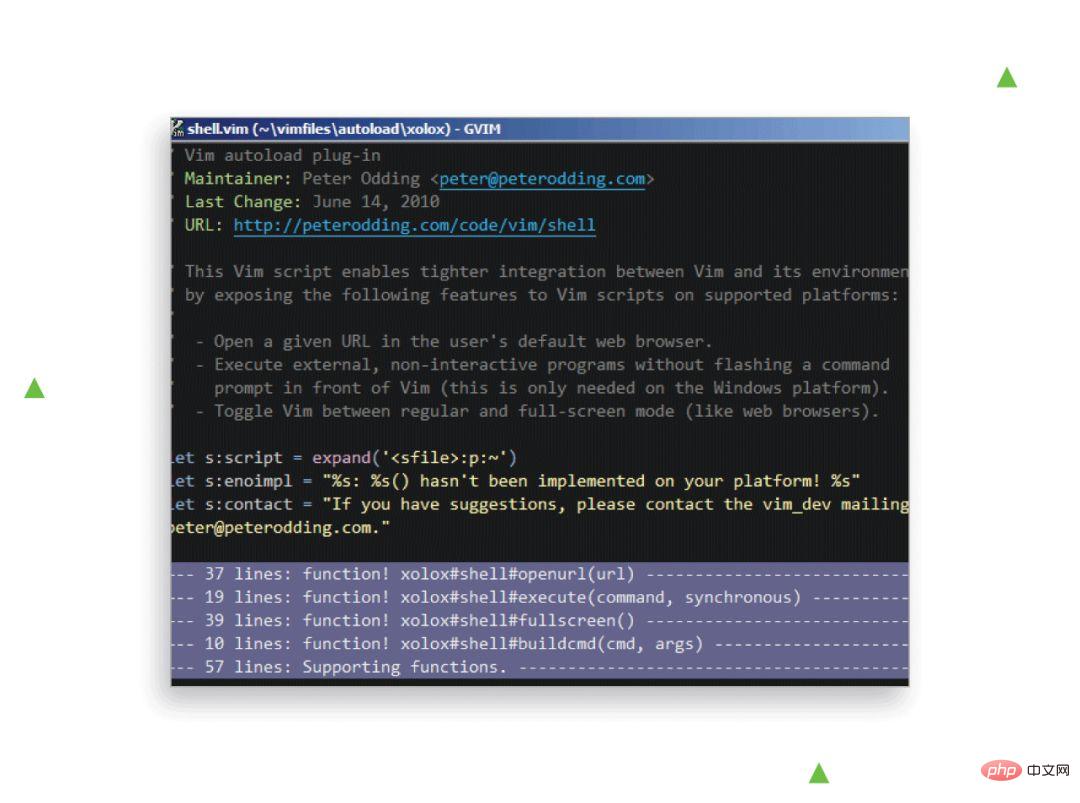
Compatibility:Windows, Linux, Mac OS, IOS, Android, UNIX, AmigaOS, MorphOS
Main plugins and features:
Its scripts allow you to perform almost any programming task in Python.
#Ctags, to help achieve better tag navigation.
#Built-in basic vocabulary completion.
Advantages:
has a keyboard interface, which can improve efficiency.
# Supports multiple plug-ins (such as version control tools, file management tools).
Use .vimrc files to implement different extended functions (such as highlighting search results).
Disadvantages:
The interface is clumsy and some developers find it inconvenient to use.
# Its modal editor requires users to spend a certain amount of time learning.
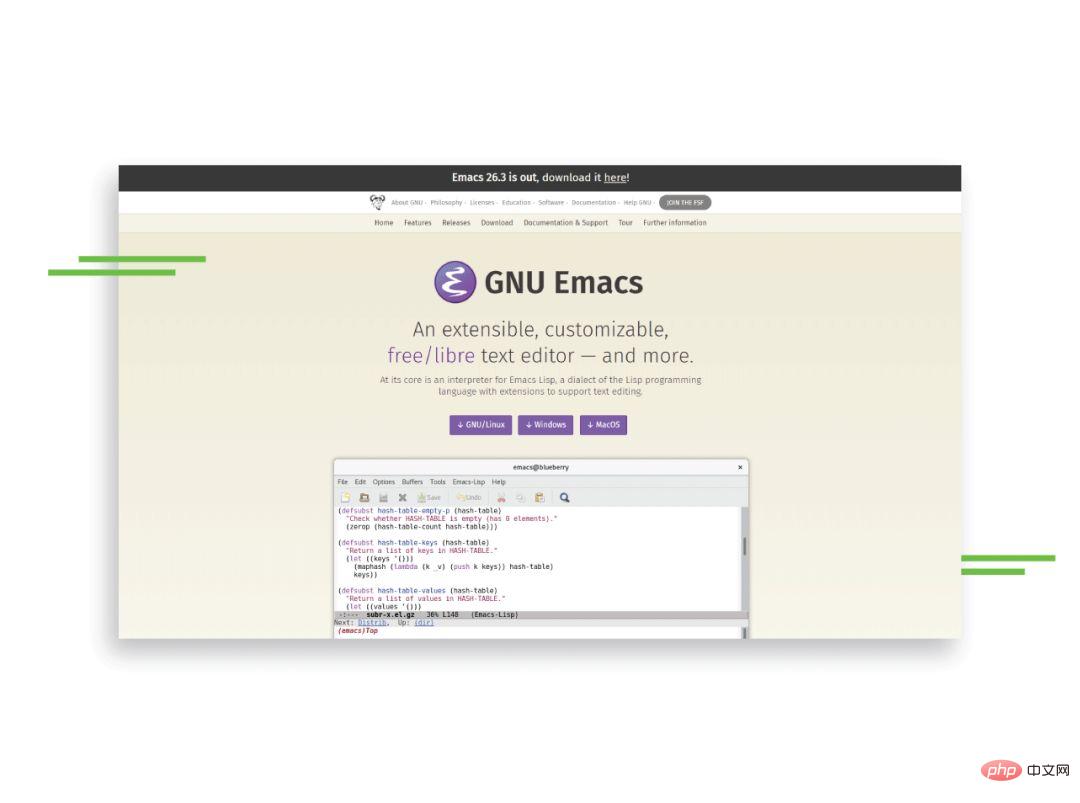 GNU Emacs is also a strong contender for the best Python editor. It is often described as extensible, self-documenting, and real-time. Although it is not the newest in the industry, it is frequently upgraded to meet the needs of developers.
GNU Emacs is also a strong contender for the best Python editor. It is often described as extensible, self-documenting, and real-time. Although it is not the newest in the industry, it is frequently upgraded to meet the needs of developers. Windows, Linux, Mac OS, IOS, Android, UNIX, AmigaOS, MorphOS
Main plugins and features:
- Using the Lisp programming language
Syntax Coloring
Support Unicode
Advantages:
Lisp, as a second language, can help programmers program better.
#Emacs is compatible with several different platforms.
# Provides a large number of custom scripts for developers to use.
Disadvantages:
Users may need to spend a little more time to learn this editor complex customization process.
# It is a little more complicated to use than some other IDEs.
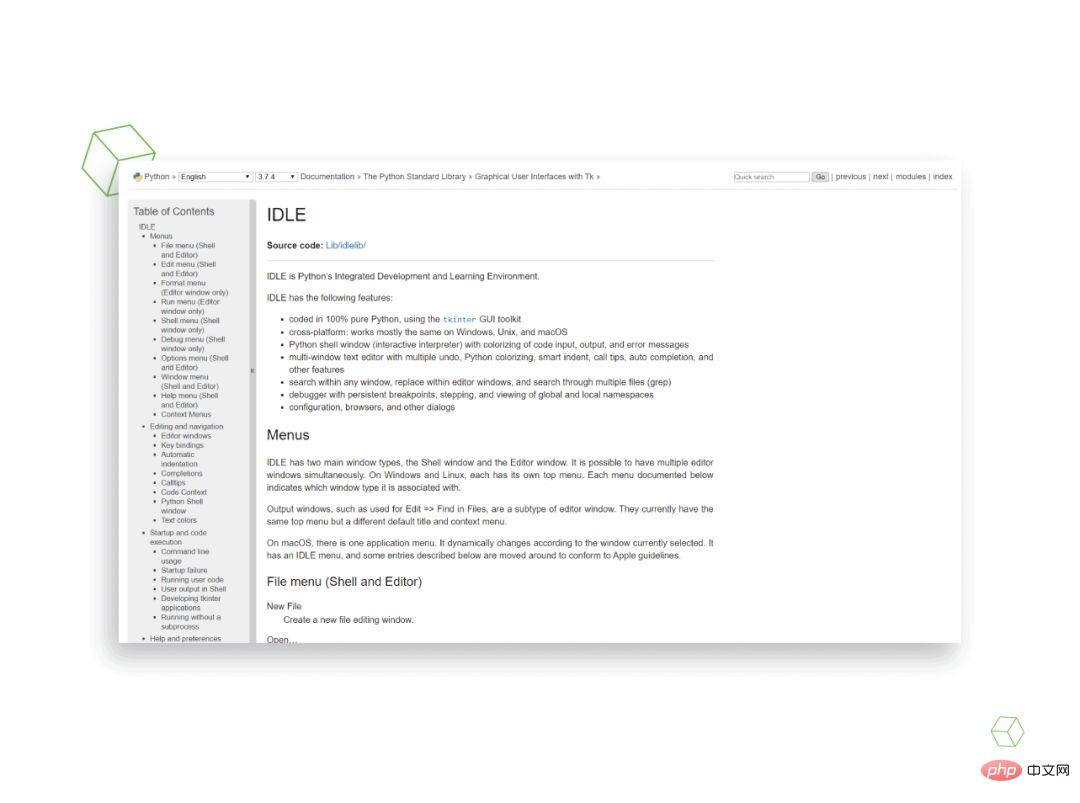
Compatibility: Windows, Linux, Mac OS
Main plugins and features:
tkinter GUI toolkit
Multi-window interface
With dialog box, browser and other configurations
Advantages:
Allows users to highlight errors, auto-encode, and accurately identify them.
#Has a lightweight Python shell.
#Its built-in corrections can improve performance.
#Allows users to search and replace files in the editor.
Disadvantages:
does not support copying to the library.
#Scripts cannot exceed 100 lines of code.
The best Python compatible IDE for machine learning, artificial intelligence and big data
Python is the best Python for machine learning, artificial intelligence One of the preferred languages ??in fields such as , big data and more. This section will introduce IDEs suitable for Python development in these areas.
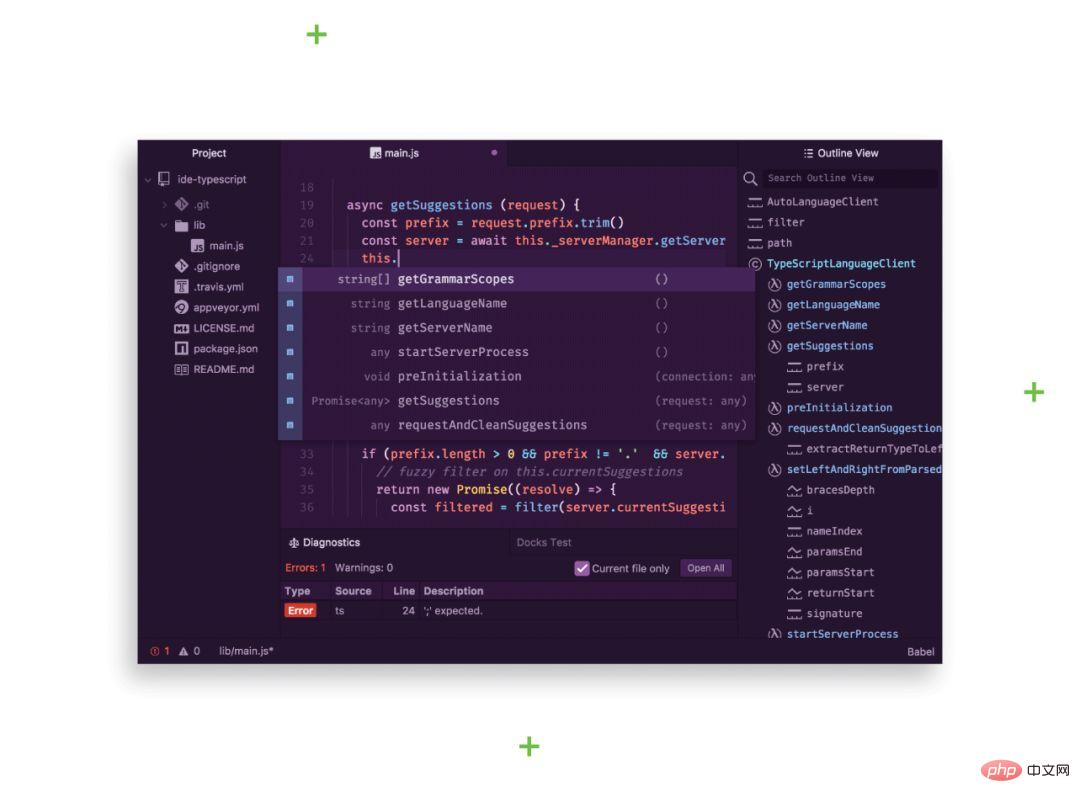
 Spyder is developed for data science of. It is an open source tool and is compatible with a large number of platforms, making it a better choice for novice IDE users. For flawless development, it incorporates several key libraries like NumPy, Matplotlib, and SciPy.
Spyder is developed for data science of. It is an open source tool and is compatible with a large number of platforms, making it a better choice for novice IDE users. For flawless development, it incorporates several key libraries like NumPy, Matplotlib, and SciPy. 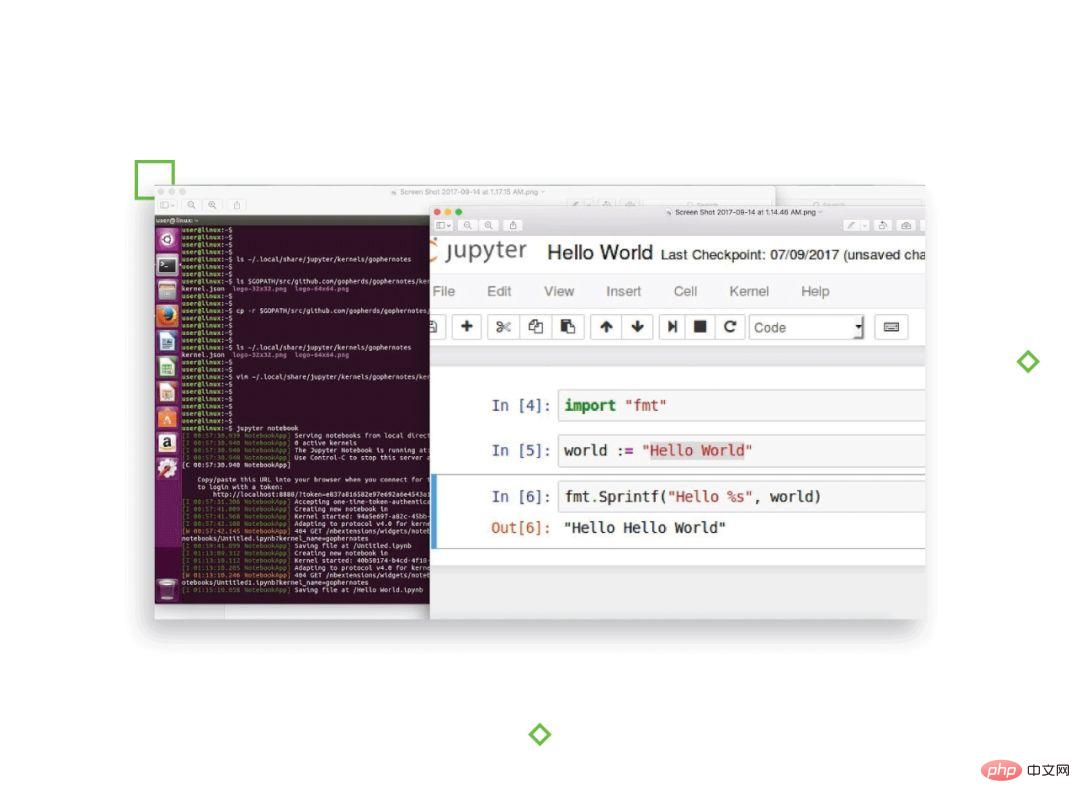
Jupyter is a web-based editor that allows developers to build and run scripts or notebooks. It is relatively simple and more user-friendly. Jupyter also uses Seaborn and Matplotlib to perform data visualization.
Other Python development IDEs
This section will introduce some less famous and popular IDEs but equally worth a look.
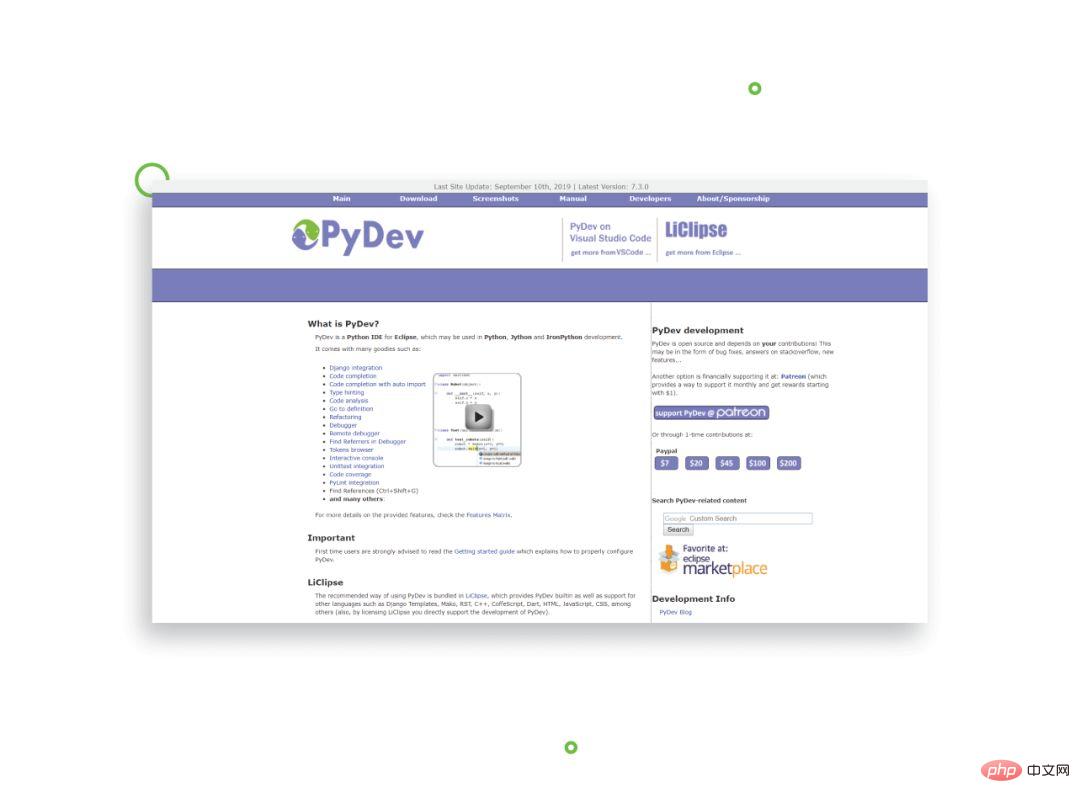
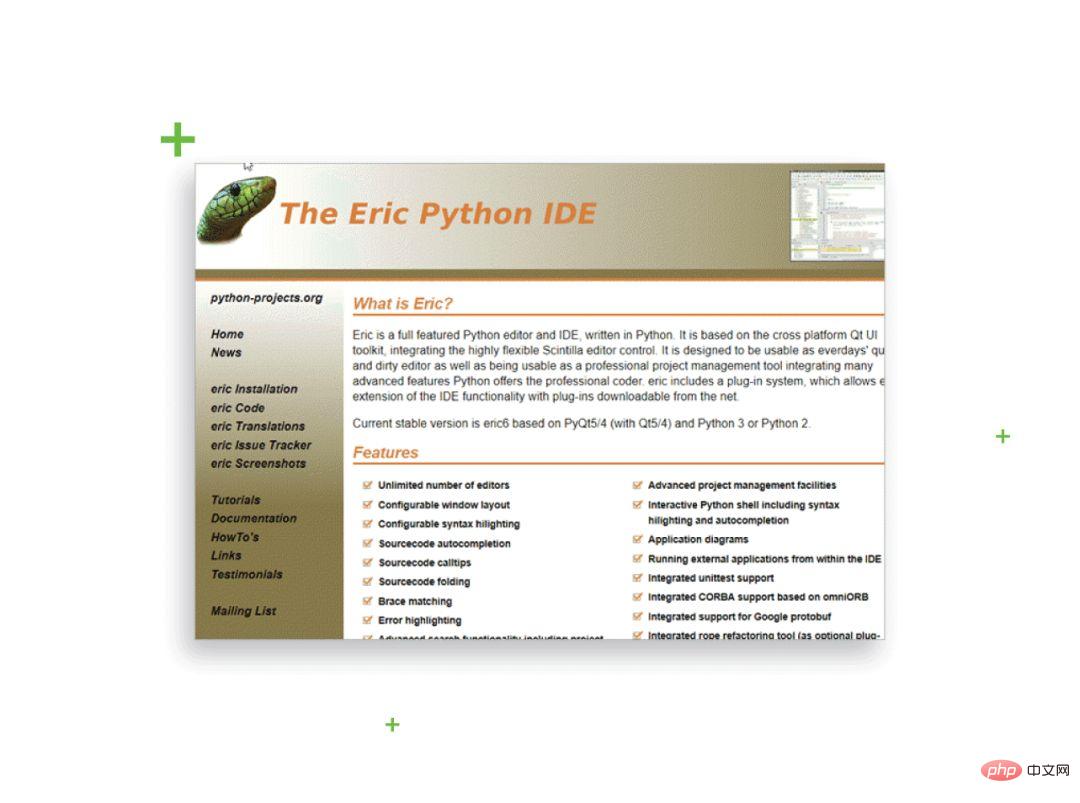


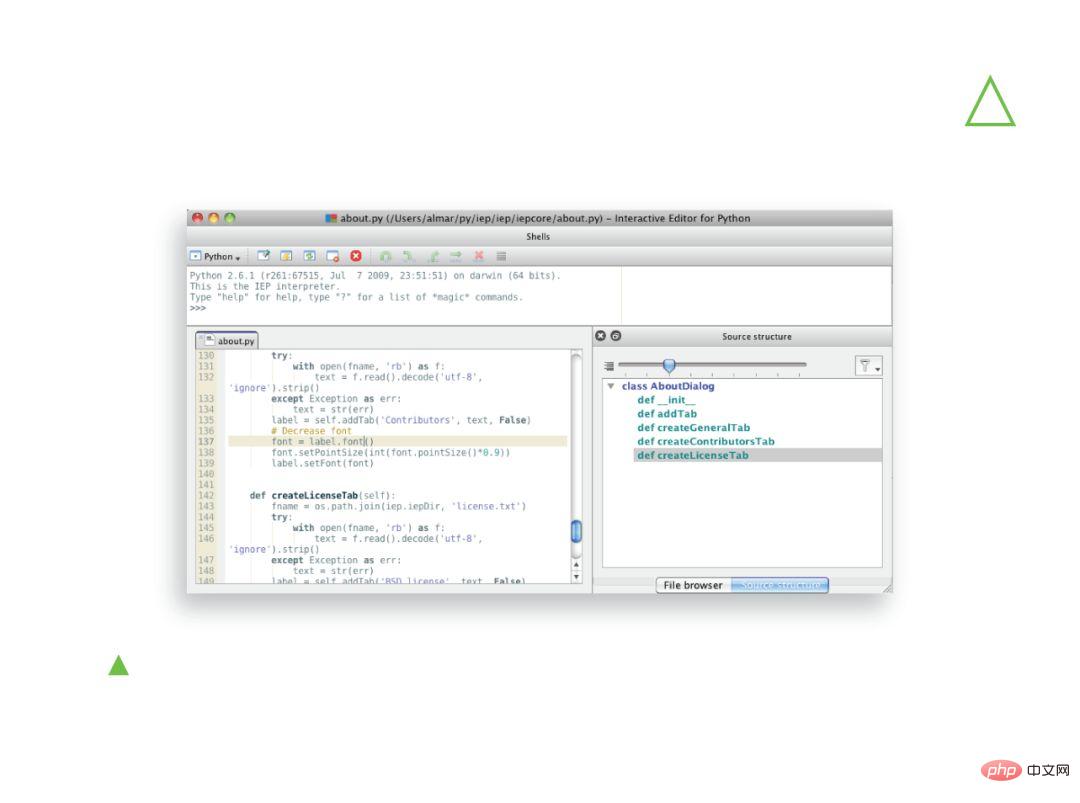
Pyzo is a free and open source programming tool that can be used with any Python interpreter, even the Conda environment. Its two most prominent features are simplicity and interactivity. Simple and easy to use, perfect for novices.
Download address: https://thonny.org/
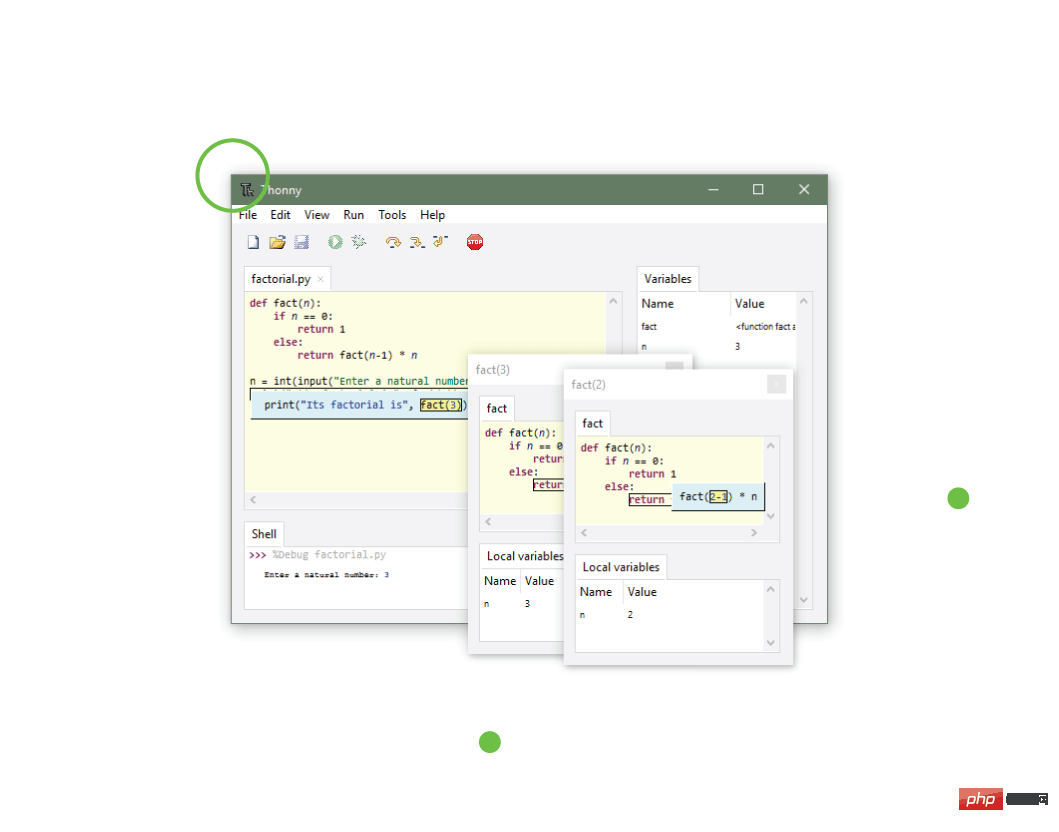
The above is the detailed content of Detailed guide to 15 Python editors/IDEs, there is always one that suits you!. For more information, please follow other related articles on the PHP Chinese website!

Hot AI Tools

Undress AI Tool
Undress images for free

Undresser.AI Undress
AI-powered app for creating realistic nude photos

AI Clothes Remover
Online AI tool for removing clothes from photos.

Clothoff.io
AI clothes remover

Video Face Swap
Swap faces in any video effortlessly with our completely free AI face swap tool!

Hot Article

Hot Tools

Notepad++7.3.1
Easy-to-use and free code editor

SublimeText3 Chinese version
Chinese version, very easy to use

Zend Studio 13.0.1
Powerful PHP integrated development environment

Dreamweaver CS6
Visual web development tools

SublimeText3 Mac version
God-level code editing software (SublimeText3)

Hot Topics
 How to use PHP combined with AI to achieve text error correction PHP syntax detection and optimization
Jul 25, 2025 pm 08:57 PM
How to use PHP combined with AI to achieve text error correction PHP syntax detection and optimization
Jul 25, 2025 pm 08:57 PM
To realize text error correction and syntax optimization with AI, you need to follow the following steps: 1. Select a suitable AI model or API, such as Baidu, Tencent API or open source NLP library; 2. Call the API through PHP's curl or Guzzle and process the return results; 3. Display error correction information in the application and allow users to choose whether to adopt it; 4. Use php-l and PHP_CodeSniffer for syntax detection and code optimization; 5. Continuously collect feedback and update the model or rules to improve the effect. When choosing AIAPI, focus on evaluating accuracy, response speed, price and support for PHP. Code optimization should follow PSR specifications, use cache reasonably, avoid circular queries, review code regularly, and use X
 PHP calls AI intelligent voice assistant PHP voice interaction system construction
Jul 25, 2025 pm 08:45 PM
PHP calls AI intelligent voice assistant PHP voice interaction system construction
Jul 25, 2025 pm 08:45 PM
User voice input is captured and sent to the PHP backend through the MediaRecorder API of the front-end JavaScript; 2. PHP saves the audio as a temporary file and calls STTAPI (such as Google or Baidu voice recognition) to convert it into text; 3. PHP sends the text to an AI service (such as OpenAIGPT) to obtain intelligent reply; 4. PHP then calls TTSAPI (such as Baidu or Google voice synthesis) to convert the reply to a voice file; 5. PHP streams the voice file back to the front-end to play, completing interaction. The entire process is dominated by PHP to ensure seamless connection between all links.
 Completed python blockbuster online viewing entrance python free finished website collection
Jul 23, 2025 pm 12:36 PM
Completed python blockbuster online viewing entrance python free finished website collection
Jul 23, 2025 pm 12:36 PM
This article has selected several top Python "finished" project websites and high-level "blockbuster" learning resource portals for you. Whether you are looking for development inspiration, observing and learning master-level source code, or systematically improving your practical capabilities, these platforms are not to be missed and can help you grow into a Python master quickly.
 How to use PHP to develop product recommendation module PHP recommendation algorithm and user behavior analysis
Jul 23, 2025 pm 07:00 PM
How to use PHP to develop product recommendation module PHP recommendation algorithm and user behavior analysis
Jul 23, 2025 pm 07:00 PM
To collect user behavior data, you need to record browsing, search, purchase and other information into the database through PHP, and clean and analyze it to explore interest preferences; 2. The selection of recommendation algorithms should be determined based on data characteristics: based on content, collaborative filtering, rules or mixed recommendations; 3. Collaborative filtering can be implemented in PHP to calculate user cosine similarity, select K nearest neighbors, weighted prediction scores and recommend high-scoring products; 4. Performance evaluation uses accuracy, recall, F1 value and CTR, conversion rate and verify the effect through A/B tests; 5. Cold start problems can be alleviated through product attributes, user registration information, popular recommendations and expert evaluations; 6. Performance optimization methods include cached recommendation results, asynchronous processing, distributed computing and SQL query optimization, thereby improving recommendation efficiency and user experience.
 How to develop AI intelligent form system with PHP PHP intelligent form design and analysis
Jul 25, 2025 pm 05:54 PM
How to develop AI intelligent form system with PHP PHP intelligent form design and analysis
Jul 25, 2025 pm 05:54 PM
When choosing a suitable PHP framework, you need to consider comprehensively according to project needs: Laravel is suitable for rapid development and provides EloquentORM and Blade template engines, which are convenient for database operation and dynamic form rendering; Symfony is more flexible and suitable for complex systems; CodeIgniter is lightweight and suitable for simple applications with high performance requirements. 2. To ensure the accuracy of AI models, we need to start with high-quality data training, reasonable selection of evaluation indicators (such as accuracy, recall, F1 value), regular performance evaluation and model tuning, and ensure code quality through unit testing and integration testing, while continuously monitoring the input data to prevent data drift. 3. Many measures are required to protect user privacy: encrypt and store sensitive data (such as AES
 How to use PHP to implement AI content recommendation system PHP intelligent content distribution mechanism
Jul 23, 2025 pm 06:12 PM
How to use PHP to implement AI content recommendation system PHP intelligent content distribution mechanism
Jul 23, 2025 pm 06:12 PM
1. PHP mainly undertakes data collection, API communication, business rule processing, cache optimization and recommendation display in the AI content recommendation system, rather than directly performing complex model training; 2. The system collects user behavior and content data through PHP, calls back-end AI services (such as Python models) to obtain recommendation results, and uses Redis cache to improve performance; 3. Basic recommendation algorithms such as collaborative filtering or content similarity can implement lightweight logic in PHP, but large-scale computing still depends on professional AI services; 4. Optimization needs to pay attention to real-time, cold start, diversity and feedback closed loop, and challenges include high concurrency performance, model update stability, data compliance and recommendation interpretability. PHP needs to work together to build stable information, database and front-end.
 python seaborn jointplot example
Jul 26, 2025 am 08:11 AM
python seaborn jointplot example
Jul 26, 2025 am 08:11 AM
Use Seaborn's jointplot to quickly visualize the relationship and distribution between two variables; 2. The basic scatter plot is implemented by sns.jointplot(data=tips,x="total_bill",y="tip",kind="scatter"), the center is a scatter plot, and the histogram is displayed on the upper and lower and right sides; 3. Add regression lines and density information to a kind="reg", and combine marginal_kws to set the edge plot style; 4. When the data volume is large, it is recommended to use "hex"
 How to develop AI-based text summary with PHP Quick Refining Technology
Jul 25, 2025 pm 05:57 PM
How to develop AI-based text summary with PHP Quick Refining Technology
Jul 25, 2025 pm 05:57 PM
The core of PHP's development of AI text summary is to call external AI service APIs (such as OpenAI, HuggingFace) as a coordinator to realize text preprocessing, API requests, response analysis and result display; 2. The limitation is that the computing performance is weak and the AI ecosystem is weak. The response strategy is to leverage APIs, service decoupling and asynchronous processing; 3. Model selection needs to weigh summary quality, cost, delay, concurrency, data privacy, and abstract models such as GPT or BART/T5 are recommended; 4. Performance optimization includes cache, asynchronous queues, batch processing and nearby area selection. Error processing needs to cover current limit retry, network timeout, key security, input verification and logging to ensure the stable and efficient operation of the system.





